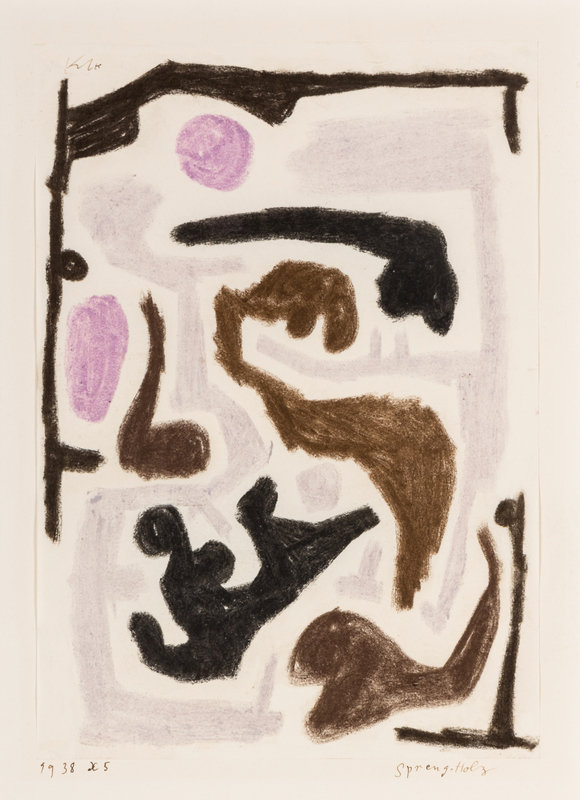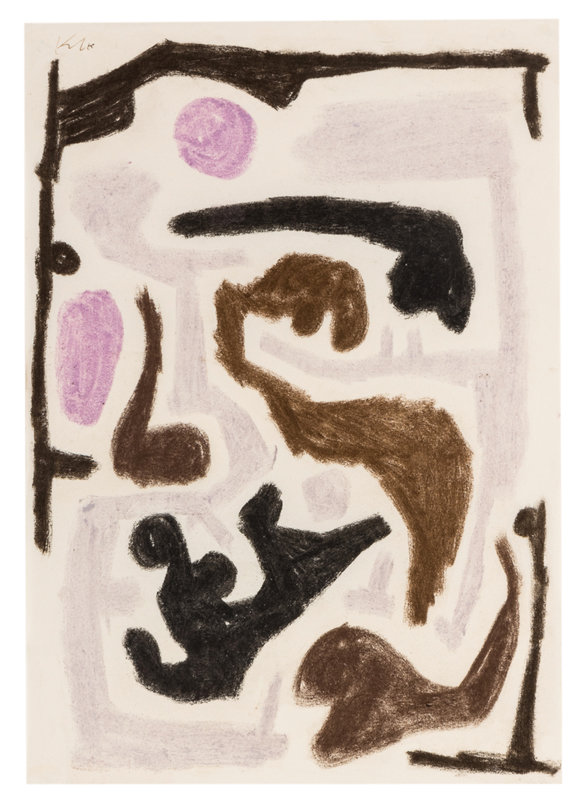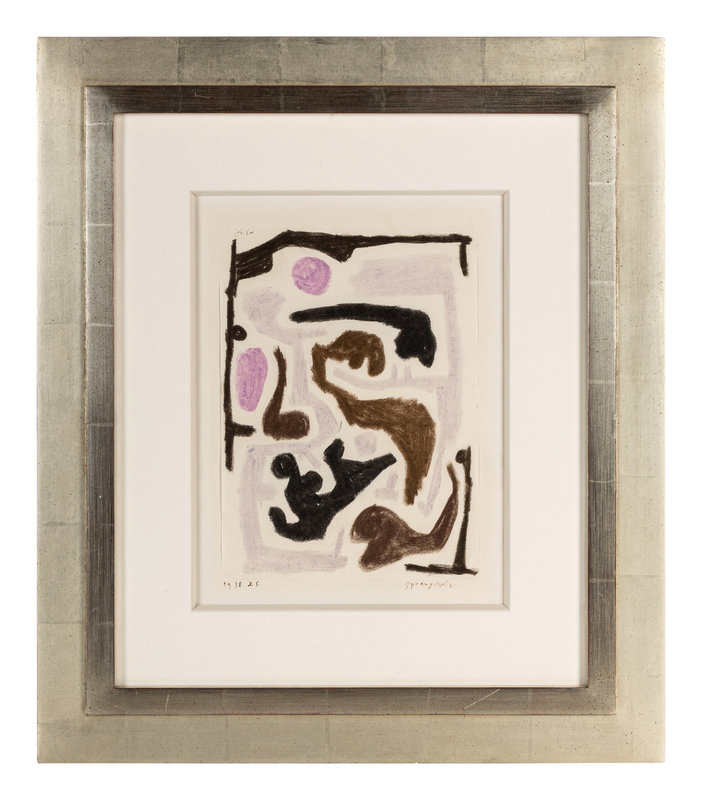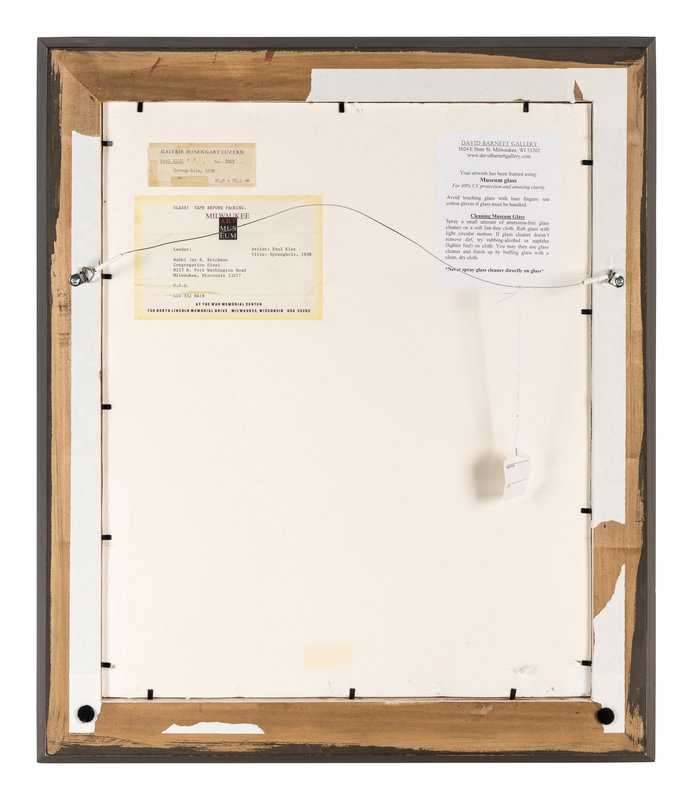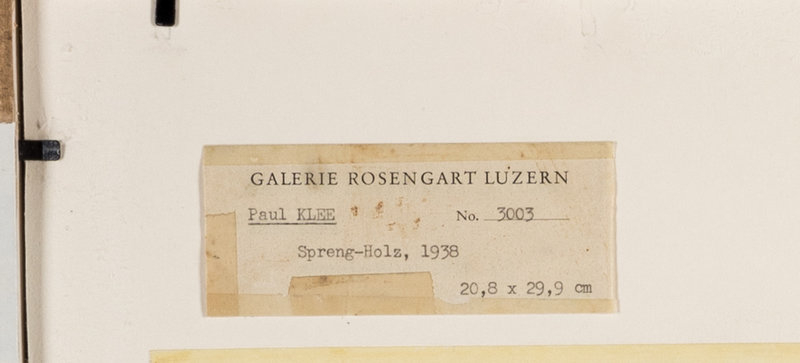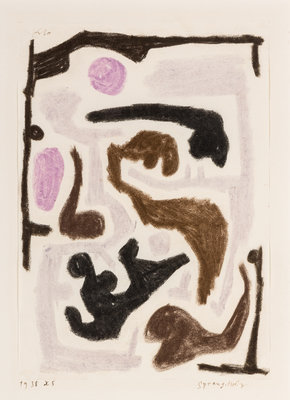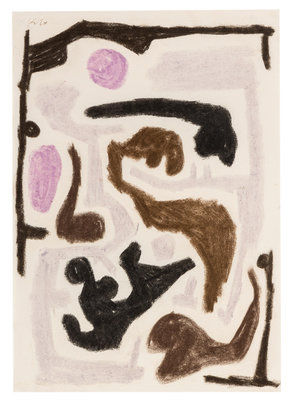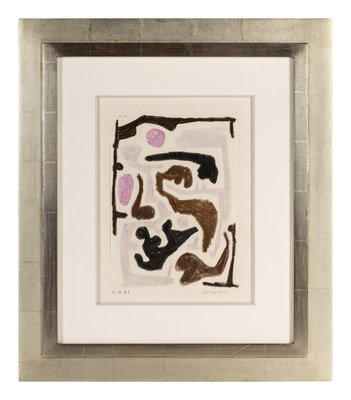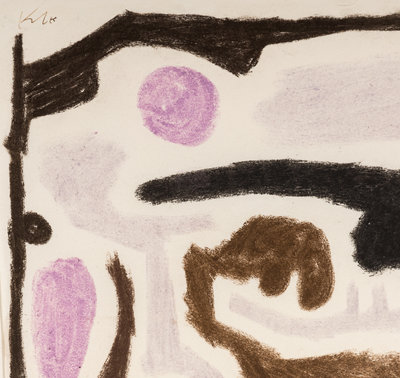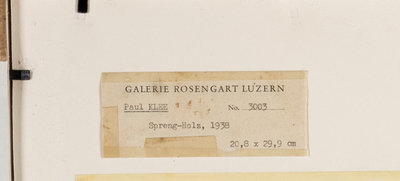Condition Report
Contact Information
Auction Specialist
Lot 64
Paul Klee
(German, 1879–1940)
Spreng-Holz (Explosive Wood), 1938
Sale 1175 - European Art
May 18, 2023
10:00AM CT
Live / Chicago
Own a similar item?
Estimate
$150,000 -
200,000
Lot Description
Paul Klee
signed Klee (upper left); dated 1938 x 5 (cardboard lower left); titled (lower right); titled (cardboard lower right) [Please note that the protective cardboard was cut away and is now in the Paul Klee Foundation, Bern, Switzerland.]
11 3/4 x 8 1/4 inches.
(German, 1879–1940)
Spreng-Holz (Explosive Wood), 1938
pastel on paper on artist's mount
signed Klee (upper left); dated 1938 x 5 (cardboard lower left); titled (lower right); titled (cardboard lower right) [Please note that the protective cardboard was cut away and is now in the Paul Klee Foundation, Bern, Switzerland.]
11 3/4 x 8 1/4 inches.
